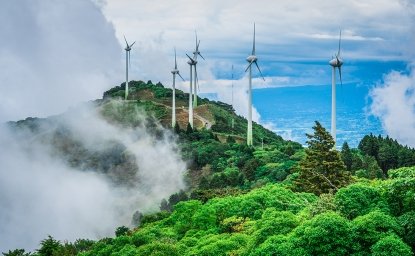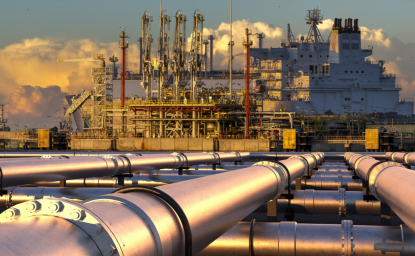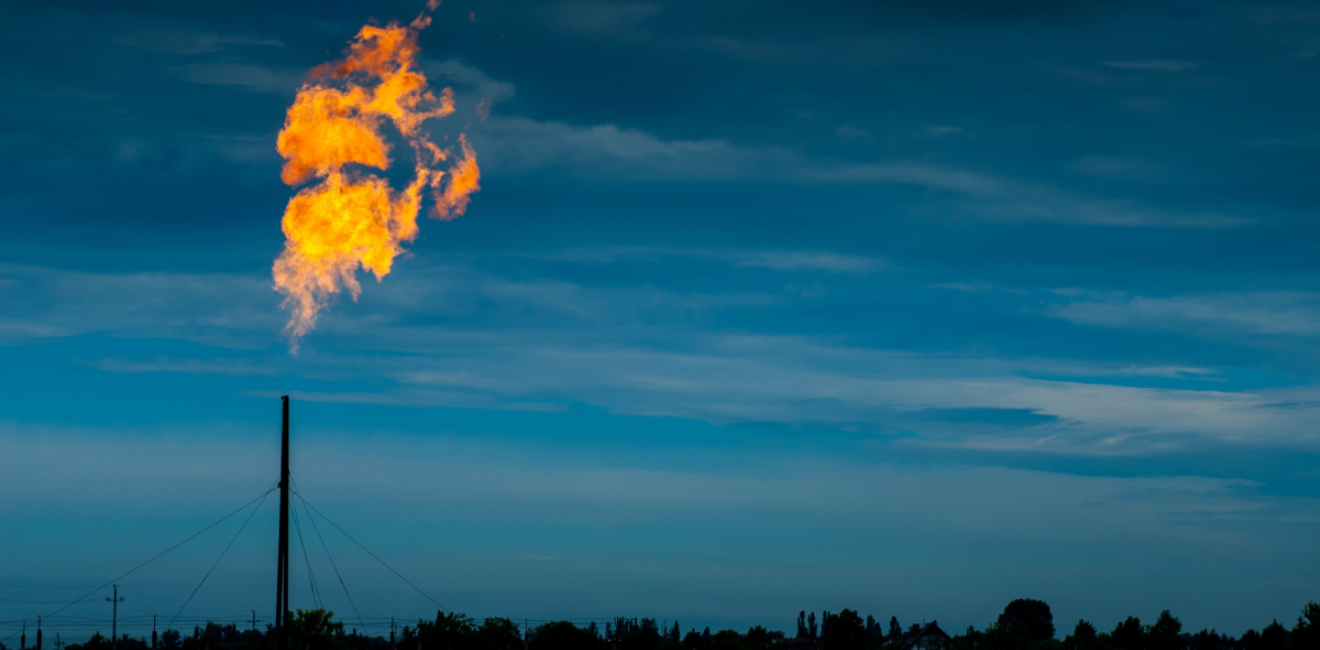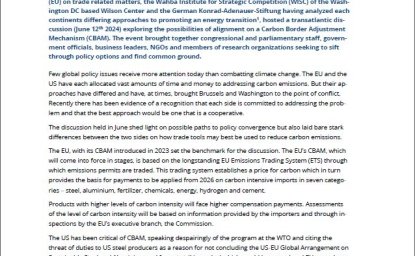Reducing methane emissions is an essential step in ensuring the increase in global temperatures do not exceed 1.5°C benchmark. Methane is the second most abundant greenhouse gas after carbon dioxide and accounts for 16% of global emissions. According to the Environmental Protection Agency (EPA), it is 28 times more potent than carbon dioxide at trapping heat in the atmosphere. However, since the gas is short-lived compared to carbon dioxide, large-scale reductions in methane emissions can have a rapid effect on limiting atmospheric warming. The oil and gas sector in particular has the greatest near-term methane mitigation potential which is cost-effective and technically feasible.
As a result, methane emissions have become a focal point in the fight against climate change. This has spurred improvements in methane detection and monitoring technology, in addition to regulatory and policy action to identity methods and opportunities to reduce emissions. In 2021, the US and European Union (EU) launched the Global Methane Pledge. Since then, signatories of the pledge have increased, and numerous governments have announced the introduction of new emissions standards and regulations. Technology breakthroughs have also enabled rapid progress.
What is the Global Methane Pledge?
The Global Methane Pledge began as a joint initiative between the US and EU (EU) that was launched at COP26 in 2021. The goal of the pledge is to rapidly reduce methane emissions from energy, agriculture, and waste by 30% below 2020 levels by 2030 to achieve near-term gains in efforts to limit global warming to 1.5C. Signatories of the pledge commit to working together to reduce global methane emissions and to taking necessary domestic actions to achieve the agreed-upon target.
Experts forecast that by meeting the Global Methane Pledge, global warming will be reduced by at least 0.2°C by 2050, and will prevent 26 million tons of crop losses, 255 thousand premature deaths, 775 thousand asthma hospitalizations, and 73 billion hours of productivity being lost annually due to extreme heat.
So far, 158 countries have signed the Global Methane Pledge. This includes Australia, Brazil, Canada, and Mexico. These 158 country participants account for a little over 50% of global methane emissions. Notably, heavy emitters China, India, and Russia have not joined the pledge. The flexibility of the pledge allows participants to pursue their own domestic policies.
While wetlands, agriculture and landfills are larges sources of methane emissions, recent government action has focused on emissions related to energy production and consumption.
Leading Methane Standards: How the US and EU Measure Up
United States Methane Regulations
In December 2023, the US Environmental Protection Agency (EPA) implemented a rule to cut methane emissions by nearly 80% by 2038. The rule involves the following:
- End routine flaring of natural gas
- Phase in requirement that gas be captured instead of burned
- Require stringent leak monitoring of oil and gas wells and compressors, reduce leaks from equipment (pumps, storage tanks, controllers)
- Rely on independent, third-party monitoring (including through the use of satellites and remote-sensing technology)
In May 2024, the EPA issued a final rule to strengthen and update methane emissions reporting requirements under its Greenhouse Gas Reporting Program (GHGRP) as required by the Inflation Reduction Act. The EPA has also partnered with the US Department of Energy to provide over $1billion in financial and technical assistance to accelerate the transition to technologies helping to reduce methane emissions. Approximately 8,000 facilities will be required to report their emissions annually.
European Union Methane Regulations
In May 2024, the EU passed a law to impose limits on its members’ oil and gas imports. Starting in 2030, the EU will place maximum methane intensity values on fossil fuels imported to the EU. While the limits have not yet been determined, exact methane limits will be decided by the time the measure enters into force. Importers that defy the limit could face financial penalties.
Foreign producers will also be affected as those who fail to comply with the regulations may face restricted market access. Regulations will apply to:
- Oil and gas upstream exploration and production
- Inactive wells (plugged and abandoned)
- Fossil gas gathering and processing
- Gas transmission
- Distribution and underground storage
- LNG facilities
Similarly to the EPA’s regulations, independent third-party verifiers will be used to ensure emissions reports are accurate, and restrictions will be placed on venting and flaring. Importers of crude oil, natural gas, and coal will be required to provide information on the reporting, verification and mitigation measures undertaken by exporters and third-country producers.
Methane is not included in the EU’s Carbon Border Adjustment Mechanism (CBAM) as CBAM only covers carbon dioxide, nitrous oxide, and perfluorocarbons. However, there is talk about a possible Methane Border Adjustment Mechanism (MBAM) being introduced in the future.
US Global Initiatives – Technological and Regulatory Assistance
Through diplomatic engagement, the US continues to recruit other countries to join the Global Methane Pledge. Recognizing the need to provide technical and regulatory know-how to its partners, the US provides technical assistance to half of the world’s top emitters through the Department of State’s Energy and Mineral Governance Program (EMGP).
As part of the program, the US has worked closely with Turkmenistan on its gas sector by providing technical expertise on limiting methane emissions and successfully encouraged the country to join the Global Methane Pledge. The US has also worked with the governments and state oil and gas companies of Kazakhstan and Nigeria. In addition, the US has encouraged Iraq to reduce venting and flaring, while helping to improve the country’s energy security thereby reducing its dependence on Iranian gas. In 2023, the US Department of Commerce published a handbook designed to help partner countries establish policies and frameworks for methane reduction.
While many countries are making strides in reducing their emissions, the absence of China from the Global Methane Pledge is cause for concern. If China continues to build coal-fired power plants, it will undermine the progress made by other countries to reduce their own emissions. As a result, the US continues to pursue bilateral dialogue with China on its emissions. This includes building off of the 2023 Sunnylands statement in which both countries pledged to implement their respective methane action plans and initiate a technical working group to cooperate on capacity building, policy dialogue, and technical solutions exchanges, among other initiatives.
The US is most competitive in methane mitigation technology. In March 2023, the US Department of Energy (DOE) announced the allocation of $47 million to fund 22 research projects to develop new and innovative technologies to detect, quantify and reduce emissions through the Innovative Methane Measurement, Monitoring, and Mitigation Technologies program. Satellite technology is also being used to detect methane emissions, and has been deployed by NASA and the nonprofit Environmental Defense Fund. Helping to propagate US technology both advances climate goals and represents a commercial opportunity for US companies.
Looking ahead to Baku
At the upcoming COP29 in Azerbaijan, emitters will be expected to lay out their progress and steps taken to reduce emissions. Rather than seeking to add new members to the Global Methane Pledge, experts say that the focus should instead be on strengthening current commitments and identifying opportunities for further abatement.
While the US and EU currently lead in regulations and standards, other countries have begun to pay more attention to emissions from the gas they import. In 2023, Japan and South Korea launched an initiative called the “Coalition for LNG Emission Abatement toward Net-zero” (CLEAN). The goal of the initiative is to reduce methane emissions in the two countries’ LNG value chains.
Financing remains an important aspect of promoting methane abatement. While some lending institutions are moving away from providing financing to fossil fuel producers, this may prevent some producers from accessing funds necessary to improve methane emissions reductions. This is especially the case for smaller producers that might lack the resources of larger international oil companies (IOCs). Therefore, it is important that restrictions on carbon financing do not impede the ability of oil and gas companies to adopt to costly emissions reduction measures.
Recently, more attention has turned to the emissions of national oil companies (NOCs). While IOCs have been the predominant focus of abatement campaigns, NOCs produce about half of the world’s oil and gas. Given their unique mandates as national oil and gas producers, they present different opportunities and challenges than large private companies. NOCs should be encouraged to adopt emissions regulation standards and collaborate on sharing and adopting best practices. Azerbaijan’s state-owned oil company SOCAR’s collaboration with BP demonstrates a model for other NOCs to follow.
An additional area where more work is needed is in the agricultural sector, which is the largest source of methane emissions. While methane emissions from agriculture are harder to monitor, there is growing support for measuring emissions and data sharing. For this, more research and development (R&D) is needed for monitoring and quantifying emissions. More R&D is also needed to reduce emissions from landfills and other areas of waste management.
Recommendations
The focus of the EU and US on third-party monitoring and evaluating in addition to ending routine flaring demonstrates compatibility between their regulations. Policy recommendations for the US include:
- Streamline the monitoring and evaluating process by working with the EU to establish equivalence for mutual recognition of emissions monitoring and evaluating to prevent overlaps which may be costly to producers.
- As per EU guidelines, if equivalence is established. importers will be exempt from reporting obligations.
- Apply methane emissions limits to foreign suppliers of oil and natural gas to ensure level playing field for domestic producers and as a step towards international standard setting.
- Continue to encourage major methane emitters not part of the pledge to join and for those who have joined to pledge to enact actions comparable to the US and EU.
Additionally, the US should continue to lead global abatement efforts by:
- Encouraging partner signatories of the Global Methane Pledge to join US and EU efforts to regulate methane emissions with the goal of ensuring widespread adoption of standards and preventing segmentation of the global LNG market. This may include collaborating with similarly aligned countries such as Canada, Japan, and South Korea.
- Continuing to provide financial and technological support to partner countries to assist them in capacity building to help advance their abatement efforts.
- Ensure any restrictions that lenders apply to carbon sources does not limit the financing available globally for methane mitigation efforts.
- Encouraging advancements in methane detection and monitoring technology to be used for agricultural and landfill applications, including by promoting research and development, in addition to promoting more collaboration in academia to determine other solutions for reducing emissions.
- Promote collaboration and data sharing between governments, corporations, not-for-profit organizations, and investors to improve alignment on corporate commitments.
Author


Wahba Institute for Strategic Competition
The Wahba Institute for Strategic Competition works to shape conversations and inspire meaningful action to strengthen technology, trade, infrastructure, and energy as part of American economic and global leadership that benefits the nation and the world. Read more

Explore More
Browse Insights & Analysis
The Promise and Pitfalls of the Clean Energy Transition



